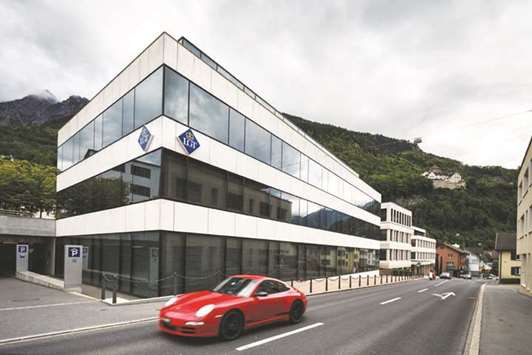Prince Hans-Adam II von und zu Liechtenstein lives in a castle perched on a cliffside in the Alpine principality that bears his name. He’s known as “Your Serene Highness” to the country’s 38,000 citizens, and he owns a collection of Renaissance masterpieces, as well as two palaces in Vienna.
He’s also now one of the world’s 500 richest people, according to the Bloomberg billionaires Index.
The prince controls a dynastic fortune that originated during the Crusades and is rooted in LGT Group, a private bank that caters to the ultra-rich worldwide. LGT’s value has jumped 64% this year, more than quadruple the gain of the Euro Stoxx Banks Index, thanks in part to a 10% increase in net assets. The surge added $1.7bn to von Liechtenstein’s net worth, lifting him to No 444 on the Bloomberg index with $4.4bn.
The fortune is the oldest on the index and originated with land holdings acquired in the 12th century that at one point were spread across what’s now Germany, Austria, Hungary and the Czech Republic. They’ve since been whittled down to mainly timberland and farmland in Austria and are valued by the index at less than $100mn, a fraction of the land wealth owned by other noble families who, while not royal, held on to property acquired centuries ago.
Hugh Grosvenor, the seventh Duke of Westminster, controls a $12.9bn fortune derived from hundreds of acres of London land his family has owned since 1677. Earl Cadogan, who’s worth $7.5bn, oversees a huge plot of central London acreage that has been in his family since 1753.
The only other royal valued by the Bloomberg index, Queen Elizabeth II, has a personal fortune of about $380mn — less than 1/10th the size of Hans-Adam’s — as most of the monarchy’s assets are held in trust for the British people.
LGT claims to be the biggest bank owned by an “entrepreneurial family” and ended 2016 with 152.1bn Swiss francs ($153.8bn) under management, up from 129.3bn francs a year earlier. Private banks, typically more nimble than their investment-banking brethren, are favoured by investors who see them as less susceptible to the legal and regulatory constraints.
The bank’s success also mirrors a comeback of sorts for the mountainous nation sandwiched between Austria and Switzerland, once notorious for being a tax haven. Liechtenstein abolished its banking secrecy laws in 2009 and has since sought to re-brand itself as a specialist private-banking hub. The country’s banks attracted a record 20.3bn Swiss francs of net inflows last year, according to Simon Tribelhorn, director of the Liechtenstein Bankers Association, almost triple from five years earlier.
The prince assumed the throne after his father’s death in 1989, becoming the leader of one of the world’s oldest noble families. After graduating from the University of St Gallen in Switzerland, he was tasked by his father with reorganising the family empire, which was in shambles thanks to expropriations during World War II and mismanagement. He shut down unprofitable divisions and narrowed its client focus to just institutions, as well as multimillionaires and billionaires.
He also retains influence that neighbouring leaders can only envy. A 2012 referendum to limit the ruler’s power — which includes the ability to veto popular votes and legislation and to dissolve parliament — was roundly rejected.

A Porsche luxury automobile passes the headquarters of LGT Group, Liechtenstein’s largest bank owned by the principality’s ruling family, in Vaduz, Liechtenstein (file). LGT’s value has jumped 64% this year, more than quadruple the gain of the Euro Stoxx Banks Index, thanks in part to a 10% increase in net assets.

